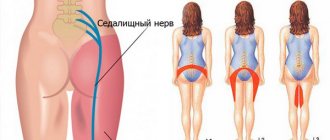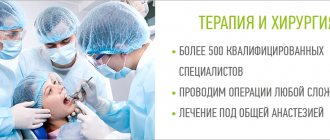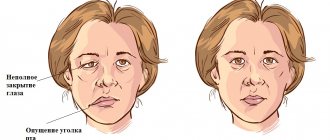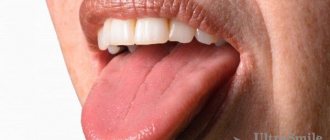A patient with neuritis of the facial nerve can be recognized immediately: squinted eyes, mouth, crooked smile, changes in facial expressions are immediately noticeable. However, the worst thing is that the time for treatment of facial neuritis is quite limited. If damaged nerves are not restored within several months, the chances of recovery are sharply reduced.
After about a year or two, you can only slightly reduce the pathological manifestations, but not completely get rid of them. After 5–10 years, all therapeutic measures will be aimed at at least partially restoring the functioning of the nerve endings. What do you need to know about the symptoms and treatment of inflammation of the facial nerve so as not to miss the deadline?
Concept of facial nerve neuritis
The main cause of a crooked smile is neuritis (inflammation) of the facial nerve. This is paresis, characterized by partial damage to the facial nerve with loss of certain functions. In severe cases, when the pathways of the nerves in the face are completely affected, we can talk about paralysis. Thus, this pathology is partial or complete damage to motor pathways from neurons located in the cerebral cortex to the end of the branches of the facial nerves with disruption of their functioning:
- facial expressions (smiling, raising eyebrows, wrinkling the nose or forehead, baring teeth, etc.);
- speeches;
- smell functions;
- closing eyes or blinking.
Gum level.
A smile looks attractive and more aesthetically pleasing , in which the line connecting the necks of the teeth (shown in dotted lines) repeats the line of the upper lip, and the level of gum exposed when smiling is symmetrical on the right and left. At the same time, with a maximally open smile, only the gum “triangles” between the teeth and a small strip of gum above them (no more than 2-3 mm wide) should be noticeable.
Thus, the gums around the upper teeth, upper and lower lips form a kind of frame for your smile. If the “picture” is not visible behind the frame, then such a smile will not look attractive.
Excessive visualization of the gums (the so-called “gummy smile”) is most often eliminated with the help of surgery, orthodontic treatment, as well as cosmetic interventions (for example, Botox injections into the upper lip, upper lip augmentation, etc.).
Facial nerve
The facial nerve is considered the main nerve of the human face. It comes to the surface in the area of the temporal bone and is divided into several branches:
- temporal;
- zygomatic;
- buccal;
- cervical and mandibular.
It performs mixed functions: provides secretion, movement, sensation (smell, taste). The facial nerve has a certain symmetry: thanks to it, both eyes close and open at the same time, both corners of the mouth are at the same height, when smiling they stretch symmetrically, when trying to raise the eyebrows they rise at the same height, and symmetrical folds form on the forehead.
Paresis or paralysis
When any part of the facial nerve is damaged, paresis or paralysis of a specific branch occurs - motor activity in this area is disrupted, and the patient cannot smile. His mouth begins to twist and his teeth on one side are not exposed when he smiles; one eye may not open. There may also be some disturbances in the functioning of the taste buds on the affected side. And salivation on this side, on the contrary, intensifies. This is how a crooked smile appears.
When the facial nerve is damaged, it usually becomes inflamed - when you palpate the affected cheek with your index finger and thumb, you will clearly feel the compaction of the branches of the nerves (you should palpate very carefully, as this causes pain to the person).
A smile will make everyone brighter, even if it is asymmetrical!
Tweet
Good afternoon
Today will be an unusual topic for many. Asymmetrical smile and what is attributed to it...
A sign of neuroticism, falsehood, crooked teeth or jaw, excessive sarcasm - this is what is most often attributed to people whose smile is asymmetrical. Is it so?
In fact, there is never complete symmetry in nature, and, as a rule, a person has one leg longer, one eye slightly larger, and a smile slightly shifted to one side. However, this “slightly” in most cases is not noticeable and becomes noticeable only upon closer examination.
Crooked teeth or jaws cause oral asymmetry, as do some muscle or nerve diseases, but these are physical nuances, and in this material we will focus on the psychological properties of an asymmetrical smile. Why do some people “squint” in one direction or another when they smile?
Many experts in the field of gesture and movement psychology, including the famous Paul Ekman, say that a fake smile is often asymmetrical. An ironic or sarcastic smile is often asymmetrical. This is all true, but not every person who smiles “unevenly” is lying to you. If people, whose even the most sincere and friendly smile is “shifted” only to one side (which, by the way, psychologists talk about, don’t judge by just one gesture, consider the behavior as a whole).
Some psychologists explain the asymmetry of a smile by the fact that one hemisphere reacts more emotionally and more vividly to what is happening than the other. Therefore, of those who “mow”, many “mow” to the left - the right hemisphere is generally more emotional (remember that the right hemisphere is responsible for the left side of the body, and vice versa, therefore in right-handed people the left hemisphere is more active). However, here is the time to remember the mentioned neuroticism - the fact that the hemispheres work so differently can cause other psychological disruptions that can lead to neuroses, and those to somatic or psychosomatic diseases. However, if you have an asymmetrical smile, you shouldn’t become a hypochondriac - this is just a general theory. After all, many children are born with asymmetry, or we are forced to wear plates for a long time.
Another reason is your subconscious reluctance to open up completely; you are always on guard, looking at the world through a visor. By the way, this same trait is associated with “accusations” that those with an asymmetrical smile are too ironic and even sarcastic. This is one of the methods of psychological defense - “translating” the arrows, banter, sometimes malicious.
But it is not all that bad. Owners of an asymmetrical smile are credited with more logical and rational thinking or, conversely, the ability to invent, imaginative thinking (depending on which hemisphere is more developed).
Be that as it may, an unnatural asymmetrical smile looks crooked and forced, but a natural one, even if it is asymmetrical, is beautiful and attracts people just as much as an “even” one. There is an opinion that, if you practice, you can, in principle, even out such a smile, although there is also a theory that asymmetry gives charm to its owners and owners.
Everything is relative, it is important to carry Love within yourself and look at the world through the prism of new times. Smile, there is always a reason to smile, because a smile charges us and guides us at the right moment in time!
Did you like the article? Click like below or go to the main page of the website “Live with Pleasure!”
Distortion on the face
The most characteristic external manifestation of this condition is a drooping and motionless corner of the mouth, a skewed eye, and a cheek. Moderate or profuse drooling and lacrimation on the affected side may also be observed. Moreover, the patient does not feel these nerves - he seems to forget how to wrinkle his nose, smile or raise an eyebrow. The muscle fibers on one side are immobile due to impaired nerve patency. Deterioration or complete loss of taste may also occur.
Causes of pathology
Scientists have still not been able to establish a definitive cause of this disease. A number of factors have been associated with facial nerve inflammation:
- Hypothermia, which leads to a decrease in the body's immune defense. In the case of neuritis, local hypothermia is especially dangerous. For example, a person was in a draft for a long time. In this case, spasm of blood vessels and muscles occurs, which causes disruption of nerve nutrition and the development of a crooked smile.
- A herpes virus that lives in the body of most people and does not manifest itself in any way. However, in case of decreased immunity, it actively multiplies in its favorite place - in the structures of nerve fibers. The virus causes nerve swelling and inflammation. It is believed that this pathology can also be provoked by polio viruses, mumps, enterovirus and adenoviruses.
- Taking large amounts of alcohol. Ethyl alcohol is a strong poison for the nervous system. It can affect not only the brain, but also cause inflammation of the facial nerves.
- High blood pressure. Hypertension can lead to increased intracranial pressure. In this case, the nuclei of the facial nerve are damaged. In addition, high blood pressure often causes stroke. And if the hemorrhage occurs near the facial nerve, then it also suffers.
- Pregnancy. The first trimester is especially dangerous. During this period, hormonal changes occur in the female body, which affect the nervous system.
- Brain tumor. This is a rare cause of neuritis, however, it should not be excluded. The tumor grows, pinches the nerve and disrupts the passage of nerve impulses.
- Traumatic brain or ear injuries. The blow causes damage or rupture of the nerve fiber. Fluid begins to accumulate in this area, swelling and inflammation occurs, which subsequently spreads to the entire nerve.
- Unsuccessful dental procedures, carious infection.
- Severe stress.
- Previous sinusitis and otitis. Pathologies of the ENT organs, bacterial or viral in nature, can spread to neighboring tissues or cause inflammation of the nerve in the area of the temporal bone.
- Diabetes. With this disease, metabolic disorders develop, which provokes the development of foci of inflammation.
- Atherosclerosis. The capillary vessels that supply the nerve with blood become clogged with plaque. As a result, the nerve begins to starve and its cells die.
- Multiple sclerosis. This disease is associated with the destruction of the myelin sheath of nerves and the formation of plaques. Such processes cause inflammation of the facial and optic nerves.
Interdental gingival papillae.
The gingival papilla is the part of the gum that fills the interdental space (marked with lines in the photo).
The location and appearance of the papillae is determined by the underlying bone, which has exactly the same contour. In the most optimal option, the tops of the gingival papillae are located as in the photo (marked with dots) - between the central incisors the gingival papilla is longest, and gradually its length decreases towards the periphery. Moreover, they should all have a healthy appearance - a triangular shape with a sharp apex, pink color, no swelling.
With various periodontal diseases, as well as with improperly performed restorations, the gingival papilla may become inflamed, acquiring a darker (or even bluish) color, losing its pointed shape, or may even disappear completely. At the same time, unaesthetic black spaces form between the teeth.
This is what the main, but still far from complete, list of parameters that need to be assessed and taken into account when planning and creating an ideal smile looks like. aesthetic dentistry does . Now you can evaluate for yourself how close your smile is to ideal. And I hope that this note will help you better understand what exactly you would like to change and improve. After all, this will greatly facilitate mutual understanding between you and your dentist.
PS See the photographs of clinical cases of my patients presented in this note in detail in the photo gallery section of the site, where details about aesthetic dentistry and modern dental technologies for restoring an ideal smile.
Diagnostics
Establishing a diagnosis is quite simple - the patient has it “written all over his face.” The main external sign is an asymmetrical smile. However, for adequate therapy it is important to determine the location and extent of the lesion. Based on external signs, one can only guess which branches are affected, but this is not enough for a complete clinical picture.
For diagnosis, electroneuromyography is used, which allows one to evaluate the conductivity of nerve endings, track the signal path and find the affected area.
An MRI may also be ordered. The photographs show the affected nerves and surrounding tissues.
Treatment
People often ask: “What pills should I take if I have a crooked smile?” Let's figure it out.
Facial neuritis should be treated no later than 3 to 7 days from the onset of the first symptoms. This is because the disease progresses rapidly as nerve cells begin to die.
It is important to find out in advance how to correct a crooked smile.
For neuritis of the facial nerve, medications containing B vitamins are prescribed. This is a neurotropic combination that improves metabolic processes, trophism of nerve pathways, and impulse transmission. Lipoic acid (thioctacid) and the medicine Keltican are also prescribed.
To restore movement functions, the patient is prescribed a massage of the face and collar area, physical therapy, which is aimed at restoring blood supply to the affected nerves.
Position of cutting edges.
The cutting edges of the central group of teeth are also located at different levels. For the central incisors and canines - approximately at the same level, for the lateral incisors - slightly higher (as marked by lines in the photo).
Again, due to the abrasion of teeth with age, the cutting edges of the teeth become at the same level, the line connecting them takes on a straight rather than convex appearance, and sometimes (with increased pathological abrasion) even concave. Therefore, to make a smile more “youthful,” you need to return the relationship of the cutting edges to a harmonious one.
It can also be noted that the dominance of the central incisors over the lateral incisors and canines also gives the smile a more youthful appearance.
The dominance of the canines, their sharp, prominent cutting cusps, make the smile more aggressive. This effect is based on the fact that in nature, long, sharp, well-developed fangs are characteristic of predators, whose entire philosophy of existence is based on aggression towards their prey.
Exercises
What exercises can be performed for inflammation of the facial nerve? How to correct a crooked smile with exercises?
It is necessary to force the nerve fibers to begin functioning again. To practice, you need to use a mirror, in front of which you do gymnastics: raising and lowering your eyebrows, blowing air through pursed lips, pronouncing sounds, syllables and words, trying not to twist your lips to one side.
We looked at the symptoms and treatment of inflammation of the facial nerve. For therapy to be effective, it is necessary to approach the process comprehensively. A variety of physiotherapeutic procedures that are aimed at eliminating the inflammatory process in nerve fibers and restoring their conductivity have a good effect.
Proportions of the tooth.
The central incisors of the upper jaw always attract special attention, because... best visible when talking and smiling. Therefore, it is very important that their proportions are correct. The most harmonious looking teeth are those with a ratio of tooth width to length of approximately 0.7-0.8: 1
However, at different ages this ratio may change. Due to the physiological wear of teeth in older age, this ratio tends to be 1:1. Therefore, if you want to “rejuvenate” your smile, you usually need to increase the length of the tooth.











